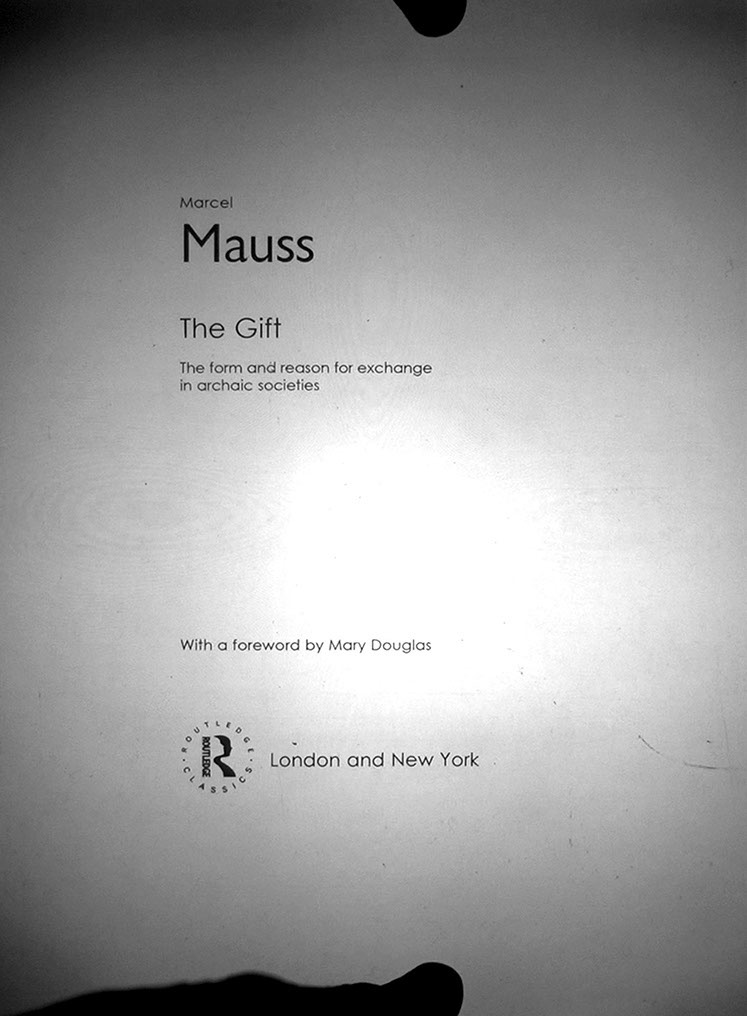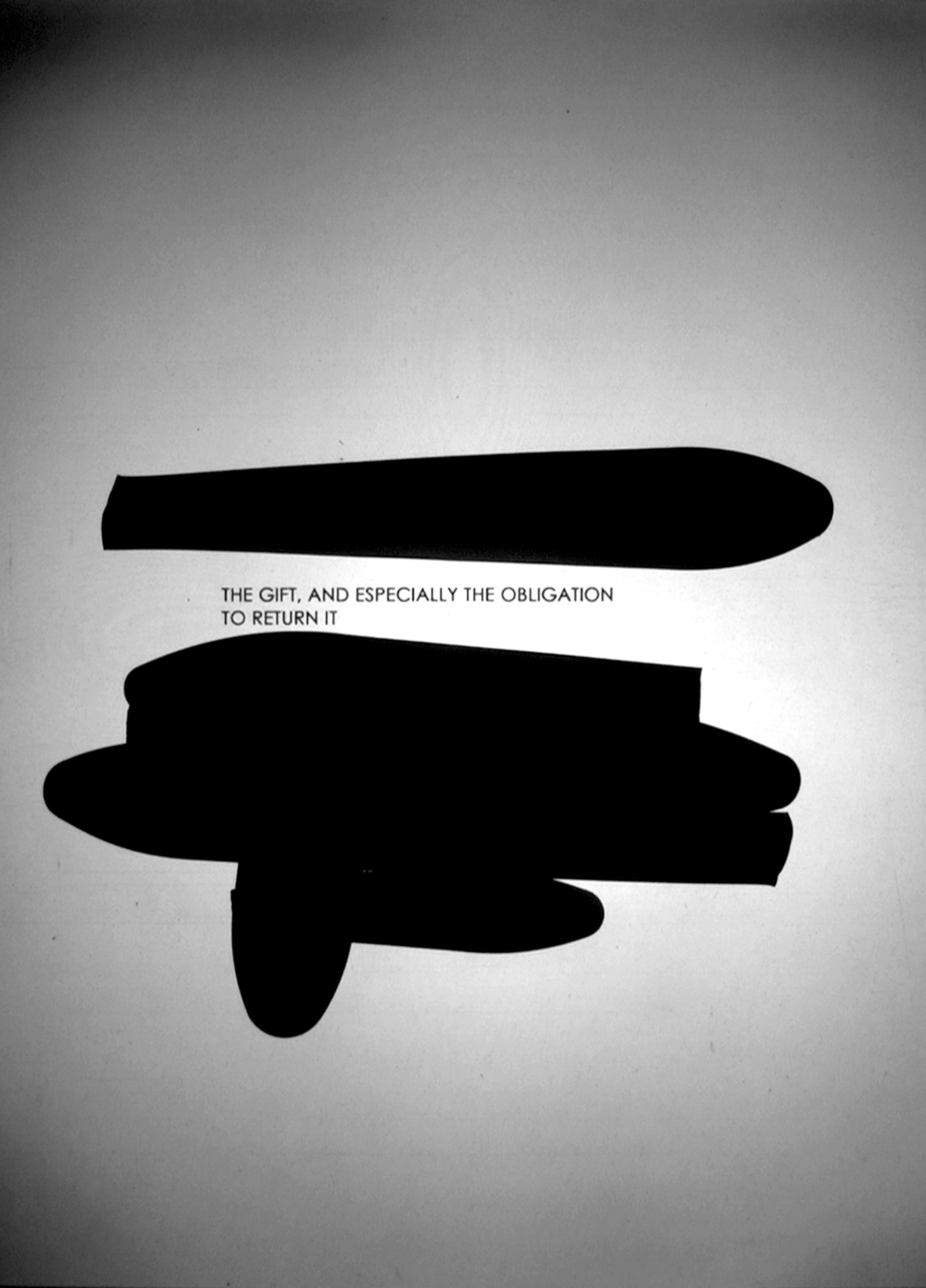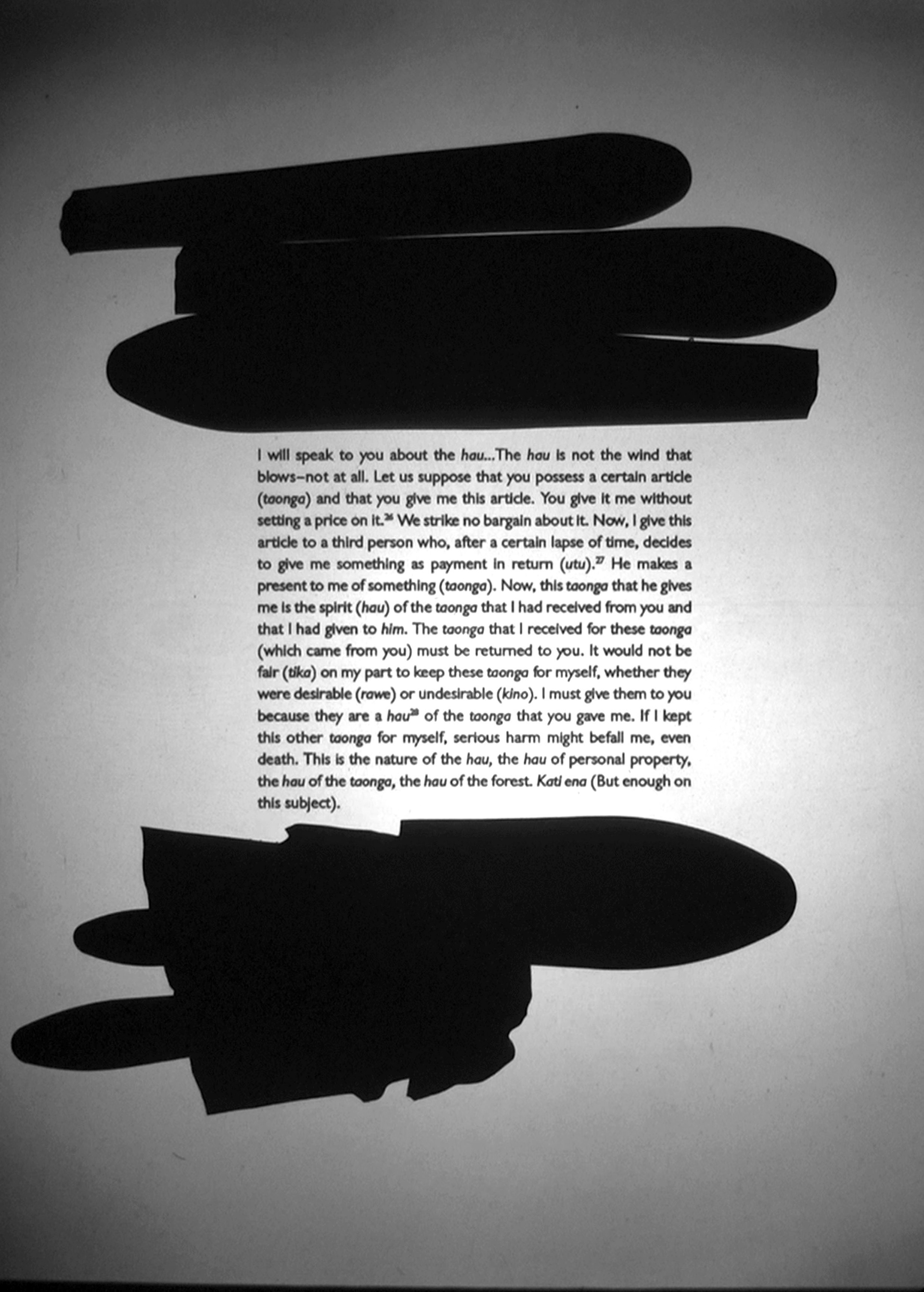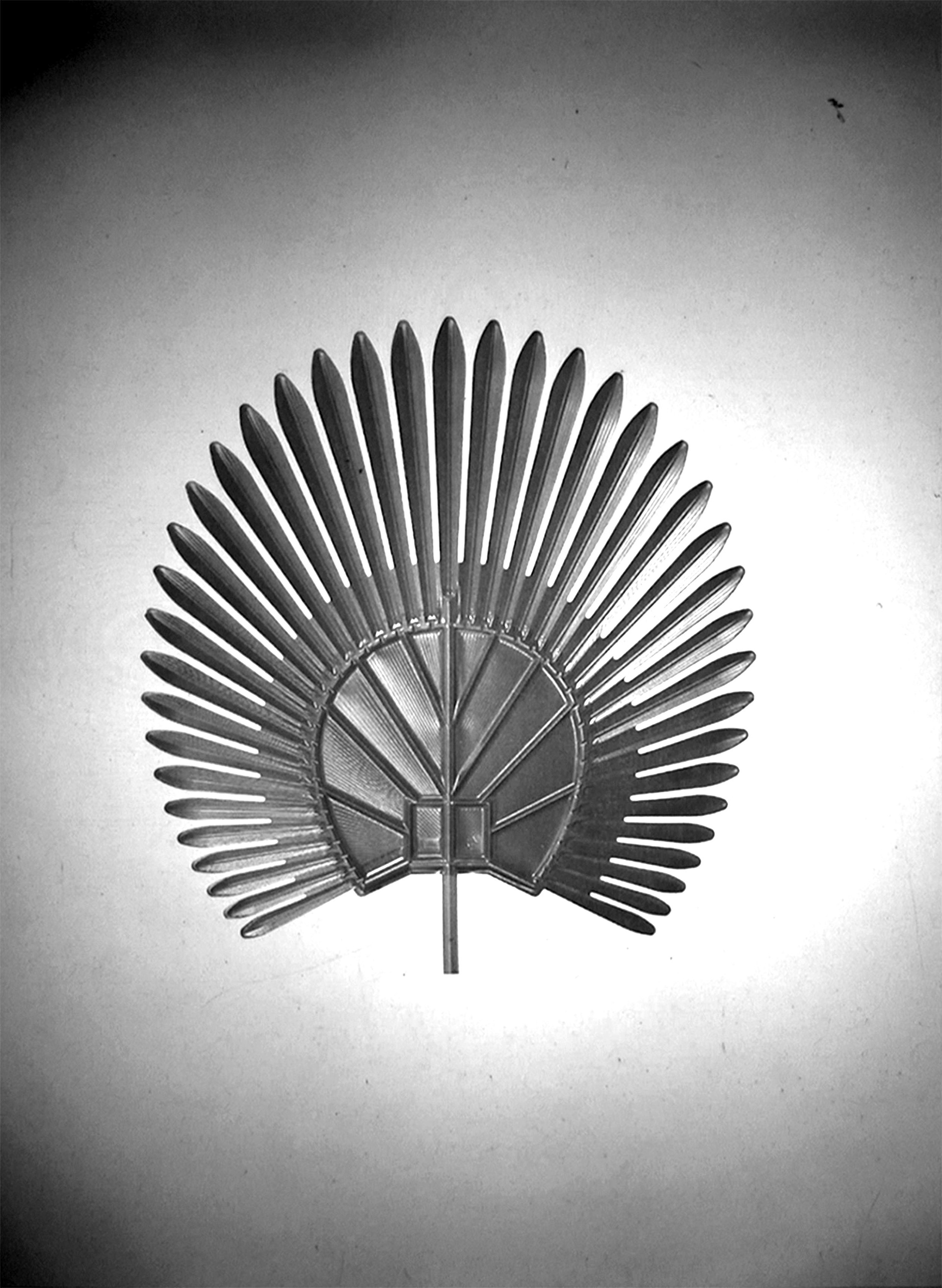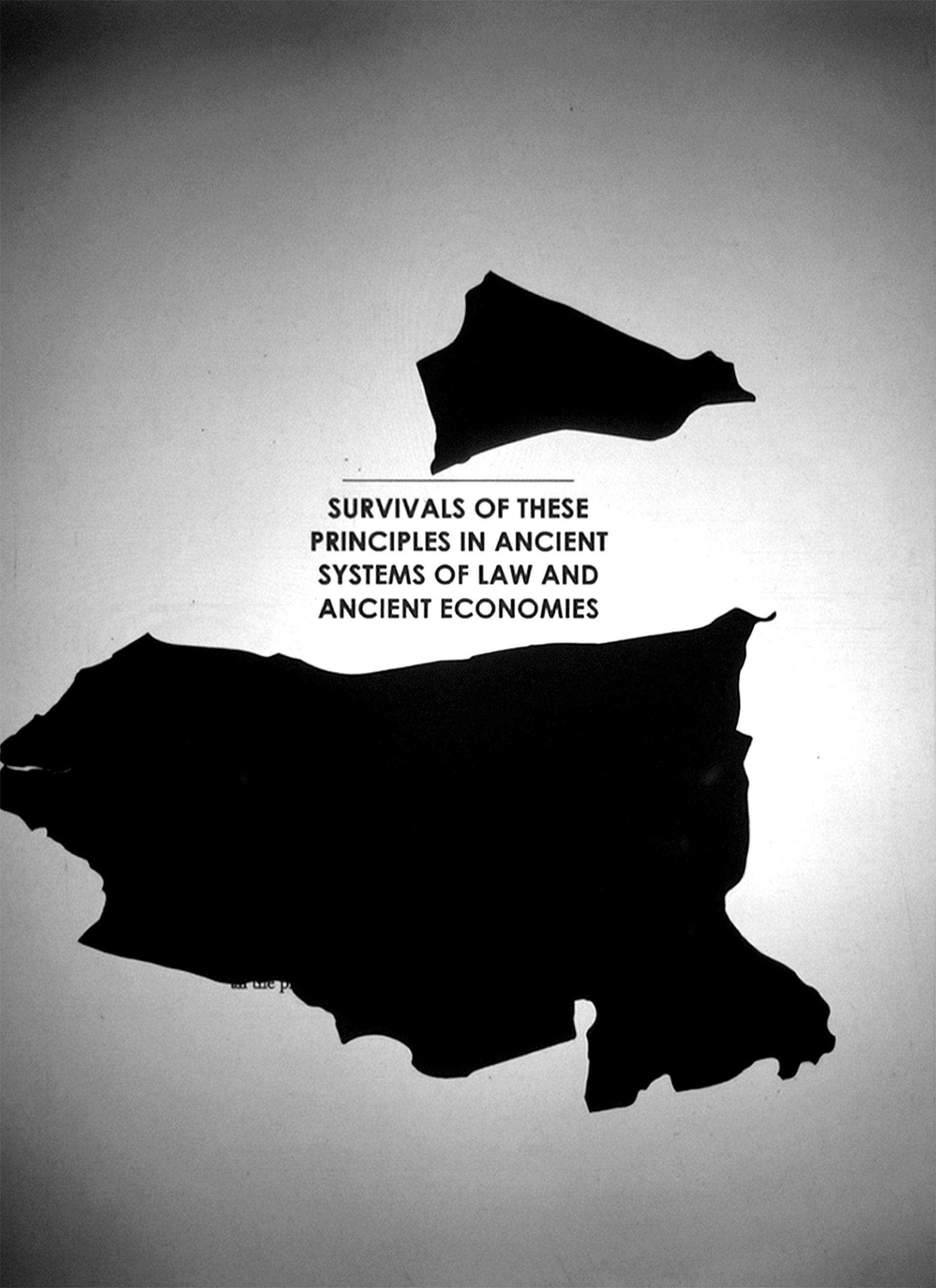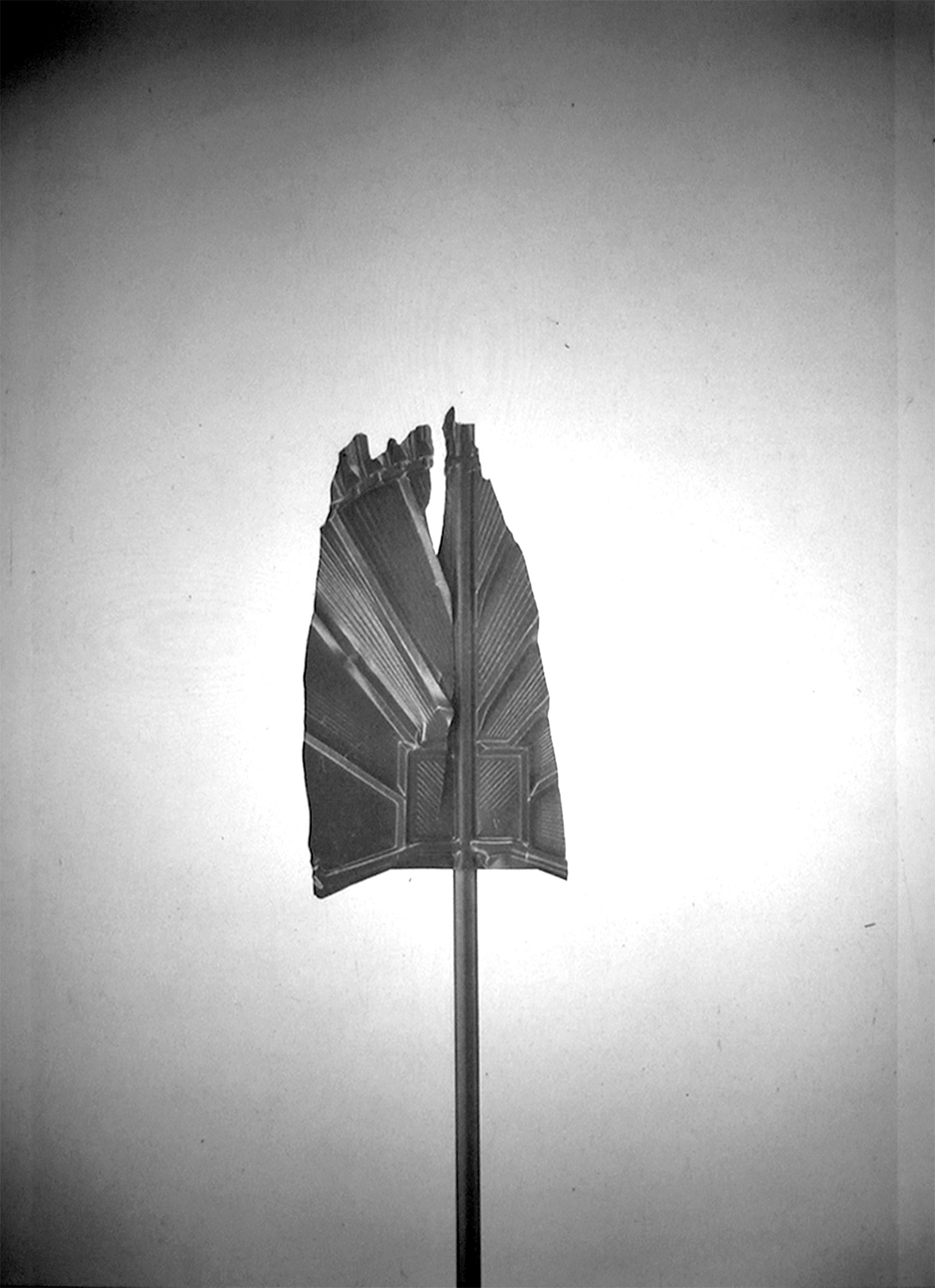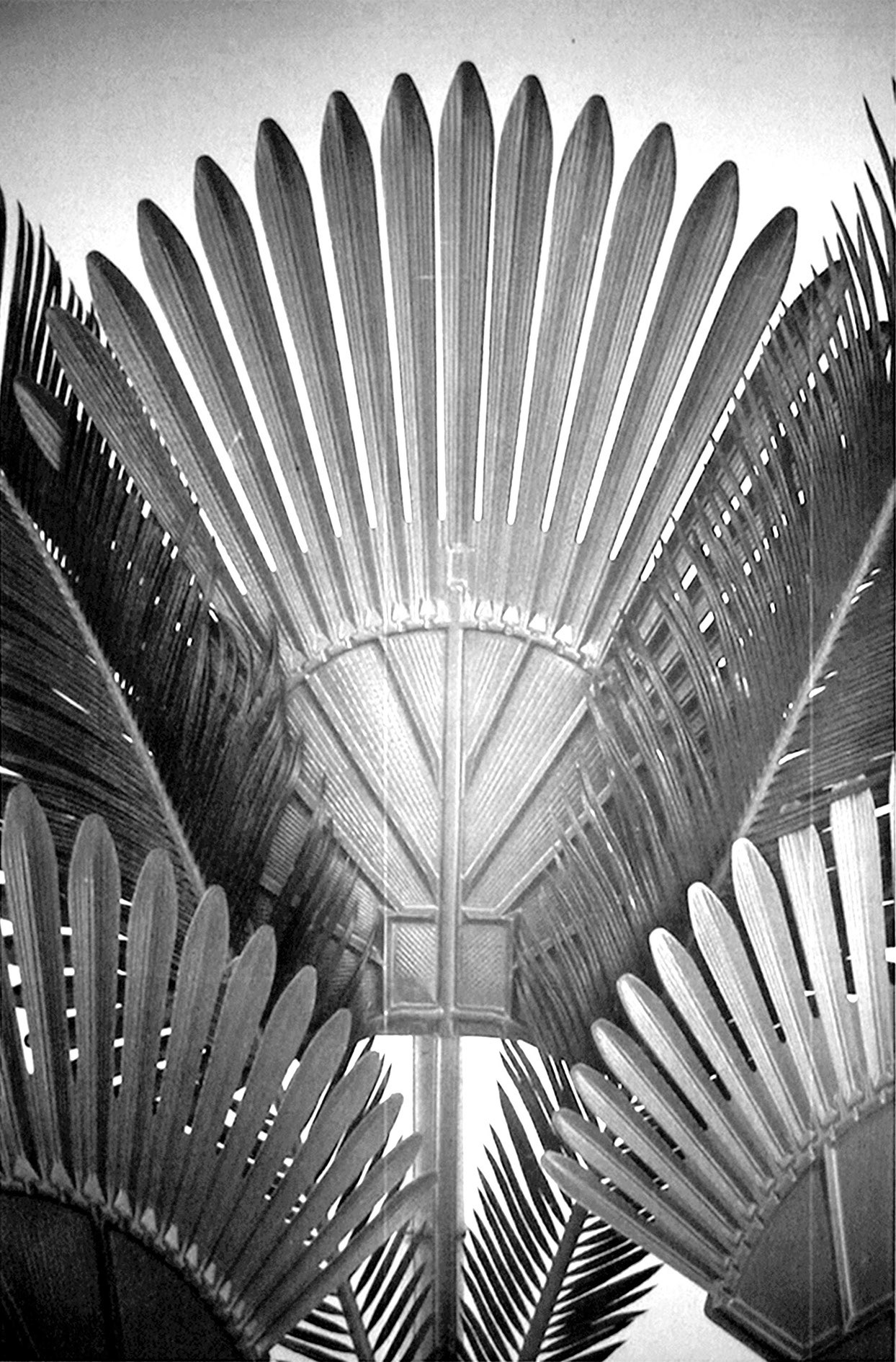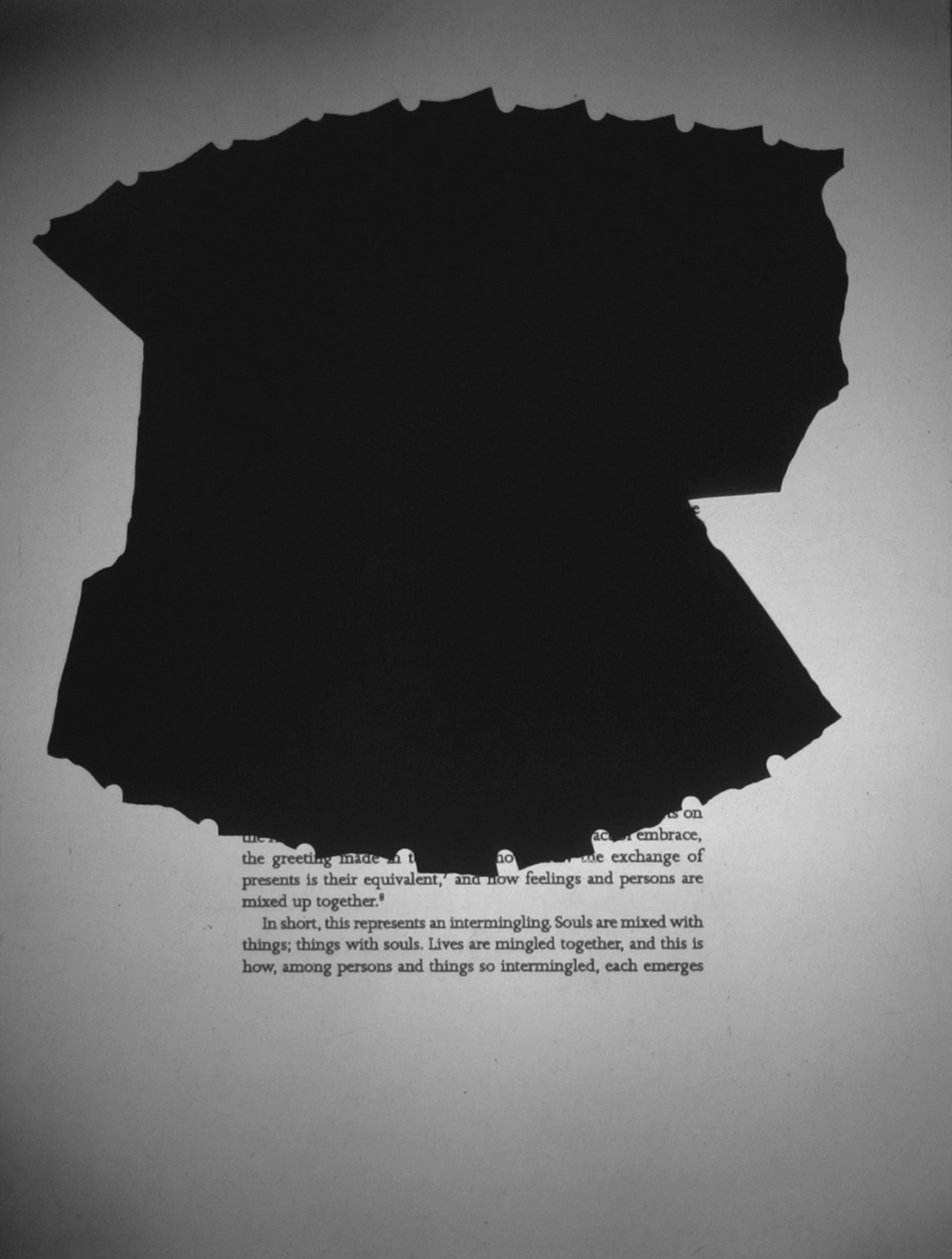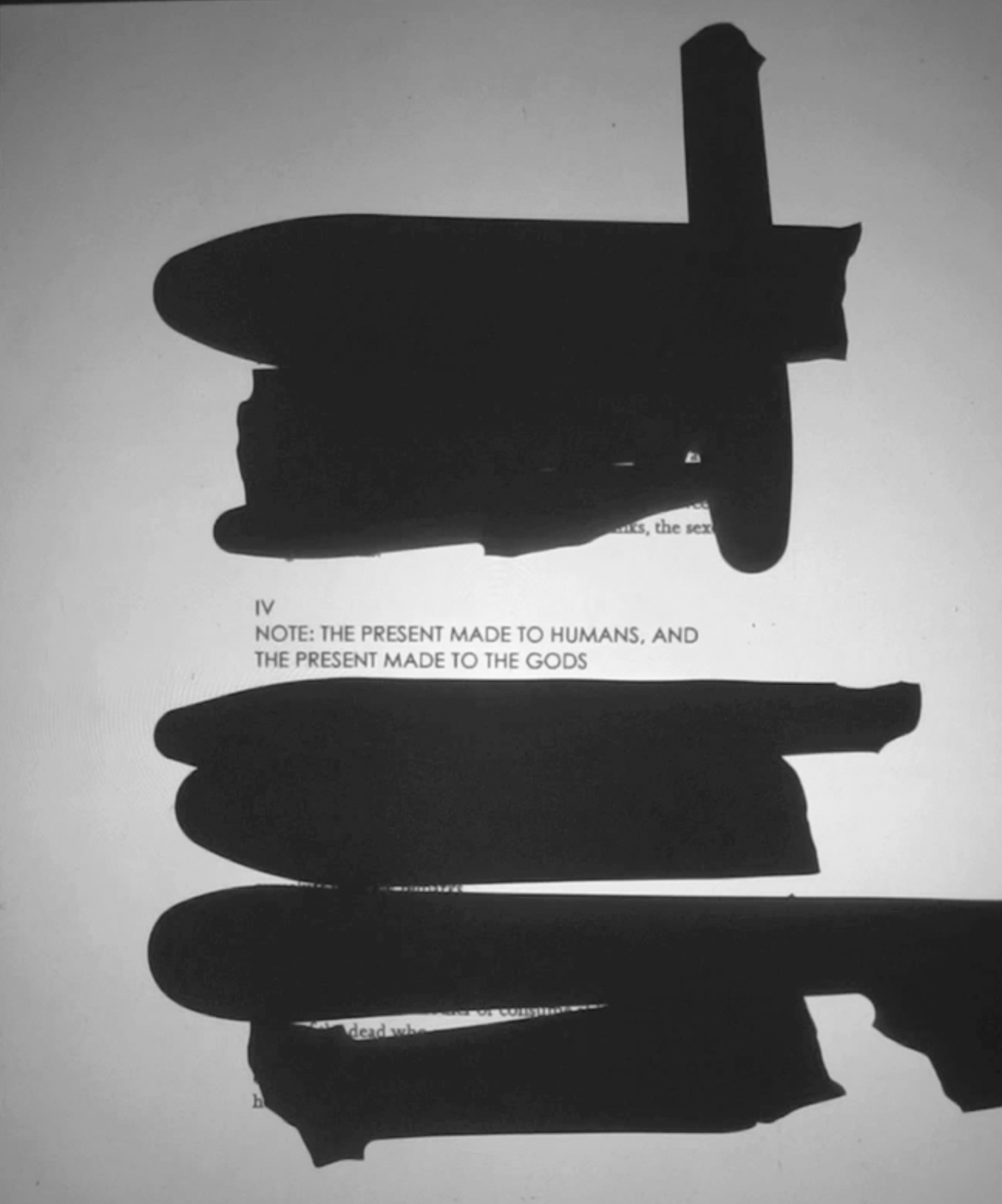In the video After Marcel Mauss a hand presents b&w photographs of Korean Hwawhan rearrangements and book pages from Mauss’ The Gift - The Form and Reason for Exchange in Archaic Societies (1925) on an overhead projector. The text becomes partly covered by plastic leaves, which appear as deep black on the projection reminiscent of ink paintings.
The photographs in the video show Hwahwans look like left-overs of animistic rituals. Entire or broken plastic leaves are presented as if they would be specimens or studies on cultural artifacts. Hwahwans are Korean flower gifts, which can be found often in public in front of new opened shops, exhibition openings, for other festive and sad occasions, often the similar ways as other flower gifts are used all over the world.
Hwahwans consist of a three-leg bamboo stand, large plastic palm tree leaves, a mix of real and fake flowers and a ribbon with text giving information about the giver’s name and a message. Hwahwans represent the giver’s spirit who isn’t able to attend. This coincides with the anthropomorphic appearance of Hwahwans, as if they would be ghost-like doubles.
Although reciprocal rituals of gift giving became replaced by the currency of money, various aspects and hybrid forms of exchange still coexist in our modern economies, where commodity relations and gift relations are not always clearly distinguishable In his essay Marcel Mauss focusses on ways of exchange of objects between groups in tribal societies in order to draw conclusions about economies in the industrialized world. Instead of regarding a gift as free or altruistic it rather shows, how gift giving shapes and determines moral and social contracts. One of Mauss' essential concerns lies in the question of what kind of force would reside in a certain given thing that obligates the receiver for reciprocation. Mauss describes gifts as a kind of hybrid based on a merging between object and person.
